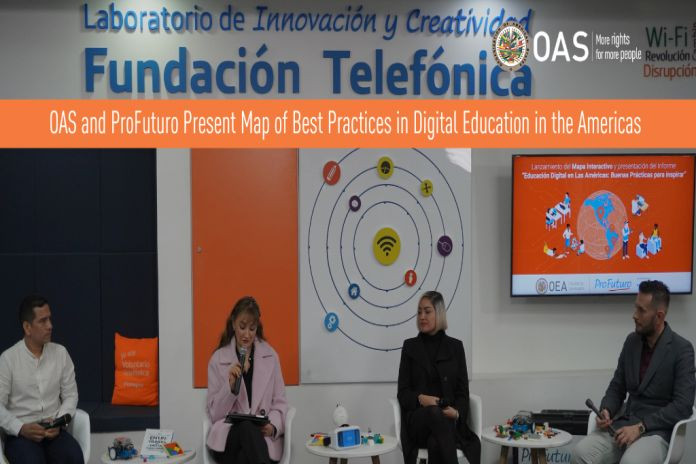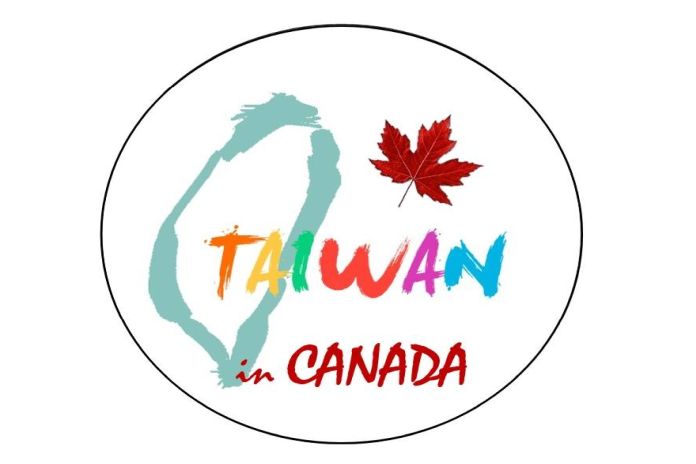WASHINGTON, USA – The Organization of American States (OAS) and ProFuturo, a digital education program of Fundación Telefónica Movistar and “la Caixa” Foundation, presents the results of the mapping of best practices in digital education in the Americas, that recognizes innovative educational experiences promoted by schools, teachers and civil society organizations.
All of them are based on technology and innovative pedagogical methodologies as levers for educational transformation in various contexts, with a focus on vulnerable environments and groups and from a gender perspective.
The call for best practices received 165 applications from 17 countries, of which 118 practices can be explored through an interactive map in English and Spanish hosted on the OAS Educational Portal. In addition, the evaluation committee has highlighted the 30 best practices that can be consulted in the report “Digital Education in the Americas: Best Practices to Inspire” (soon available in English).
Colombia is the country with the highest representation on the map (30%), followed by Mexico (22%), Ecuador (21%), Argentina (13%), and Peru (9%). Best practices have also been found in Belize, Bolivia, Brazil, Chile, Costa Rica, El Salvador, Guatemala, Nicaragua, Paraguay, the United States, Uruguay, and Venezuela.
The interactive map and the report were presented at a hybrid event that took place on April 26 in Bogota, Colombia at the Fundación Telefónica Colombia facilities.
A recording of the transmission is available in English and Spanish .
The project, developed within the framework of the OAS Partnership with ProFuturo, seeks to make visible practices that contribute to the improvement of educational quality in Latin America and the Caribbean by addressing the main post-pandemic educational challenges. Among other criteria, the evaluation committee considered the human rights and equity approach, the level of innovation, the ability to be sustainable over time and replicability in other contexts, as well as the integration of technologies to favor the students´ engagement with the school, the learning recovery and the development of competences.
“This mapping is a necessary first step to track innovative and scalable pedagogical practices that make possible a movement of continuous, global and local improvement for the essential transformation of teaching-learning processes in the region through the empowerment of teachers, school principals and families,” says Javier González Casado, spokesman for ProFuturo and member of the evaluation committee of the practices, in which the Inter-American Network of Teacher Education (ITEN) and independent referents in the field of educational innovation also participated.
“Education in Latin America is full of hidden treasures,” says Axel Rivas, Argentine researcher, teacher, writer, and member of the evaluation committee who also directs the School of Education of the University of San Andrés (UdeSA). “This map is a way to recognize the daily efforts of countless educators to generate alternatives to guarantee the right to education and use digital technologies with pedagogical sense,” he concludes.
From STEM camps and community gardens to “digital remedies” to transform education.
The mapping highlights 30 best practices that focus on 5 major purposes: STEM capacity and skills building; promotion of reading and reading comprehension; cultural ownership and identity; fostering learning to learn skills; and lowering learning barriers in students with disabilities.
Among them, there are creative and innovative proposals not only designed to benefit children and young people, but also positively impacting their families and the community. This is the case of the educational space Atalaya Sur, in Argentina, which has created an educational device of digital literacy for the mothers of the students who attend its workshops.
Other examples that stand out for their differentiating approach are STEM camps or community gardens. The first are promoted by the Ecuadorian section of the Institute of Electrical and Electronics Engineers (IEEE) with the aim of promoting the interest of the youngest in science, technology, engineering and mathematics. On the other hand, the gardens community emerged in the Montessori Municipal Educational Institution in San Francisco, Colombia to contribute to the families´ food security of during COVID-19. The project allowed students to collaborate with their families in designing and cultivating the gardens while acquiring STEM skills practically.
Another interesting experience is the so-called “digital remedies” of Teach 4 All Mexico, a “virtual pharmacy” on YouTube operated by the New Teacher Project that offers teachers a series of explanatory capsules to improve their distance teaching practice.
Among the main learning outcomes of this mapping of best practices in schools, is the importance of strengthening collaborations, of understanding the student as the protagonist of their learning process, the value of ICT as allies of transformative learning, the creation of new forms of learning thanks to the integration of innovative pedagogical methodologies and the importance of data and evaluation to make evidence-based decisions.







